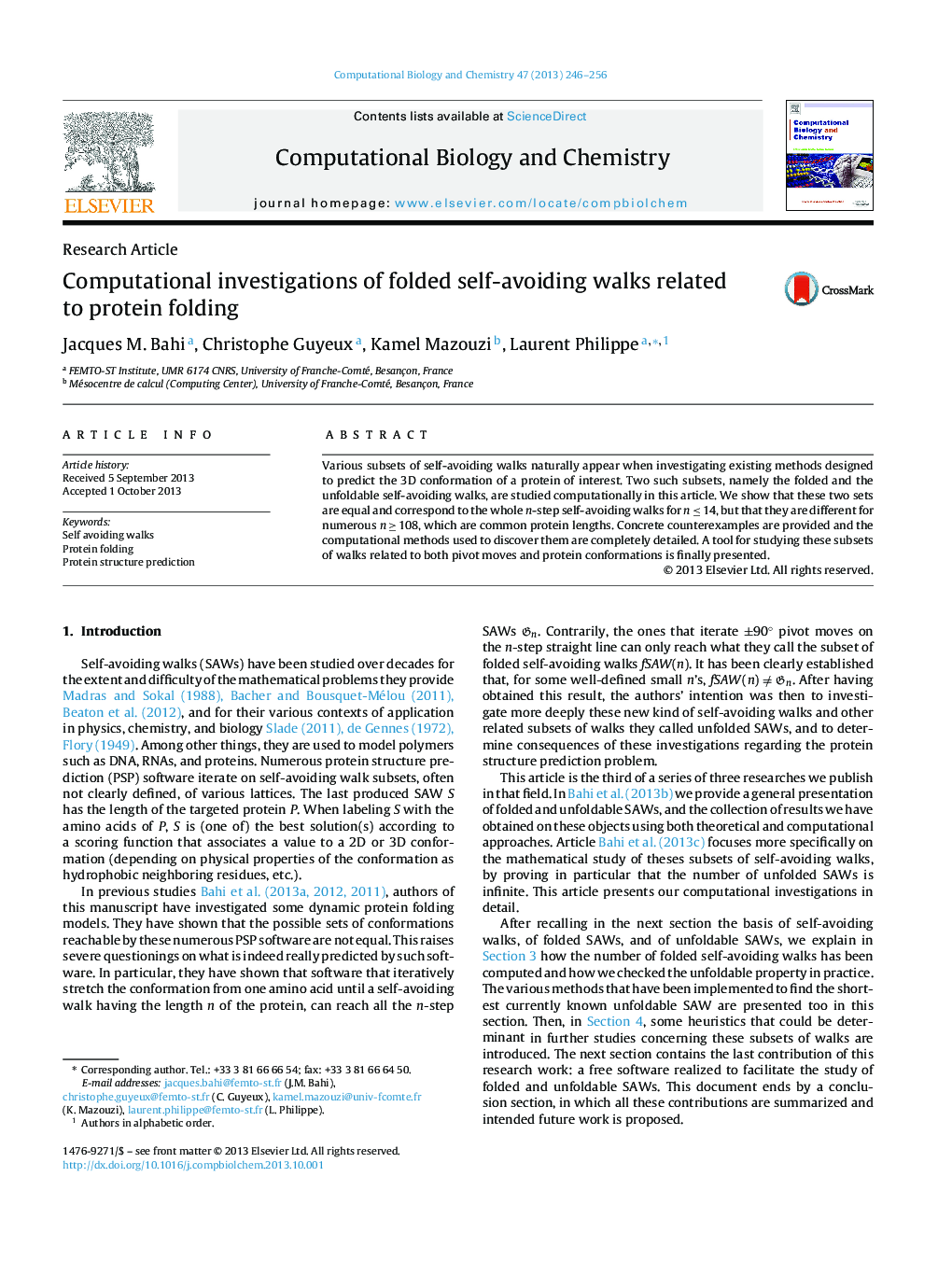| Article ID | Journal | Published Year | Pages | File Type |
|---|---|---|---|---|
| 6487184 | Computational Biology and Chemistry | 2013 | 11 Pages |
Abstract
Various subsets of self-avoiding walks naturally appear when investigating existing methods designed to predict the 3D conformation of a protein of interest. Two such subsets, namely the folded and the unfoldable self-avoiding walks, are studied computationally in this article. We show that these two sets are equal and correspond to the whole n-step self-avoiding walks for n â¤Â 14, but that they are different for numerous n â¥Â 108, which are common protein lengths. Concrete counterexamples are provided and the computational methods used to discover them are completely detailed. A tool for studying these subsets of walks related to both pivot moves and protein conformations is finally presented.
Related Topics
Physical Sciences and Engineering
Chemical Engineering
Bioengineering
Authors
Jacques M. Bahi, Christophe Guyeux, Kamel Mazouzi, Laurent Philippe,
